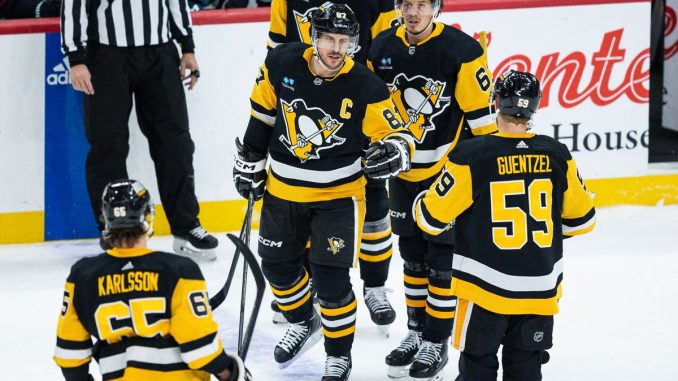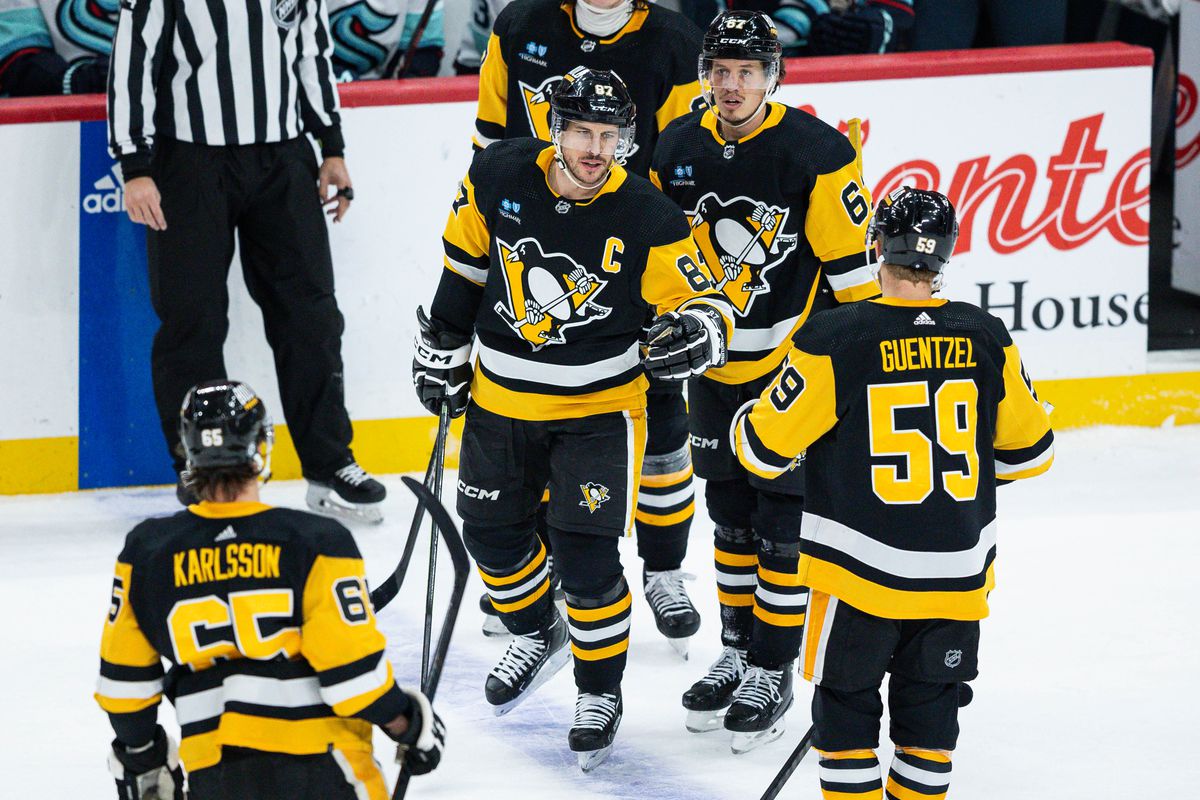
After seamless transition to Penguins, Michael Bunting looks to be key piece in future

In back-to-back games at the end of the Pittsburgh Penguins’ season, winger Michael Bunting scored his 20th goal of the year, only for both scores to be taken away.
He was credited with a goal in the third period April 14 against Boston, his second of the game, but a few hours afterwards, the NHL announced a scoring change, giving the goal to Evgeni Malkin instead.
Undeterred, during the Penguins’ next game two days later against Nashville, he scored on a slick between-the-legs move at the crease to beat the Predators’ Juuse Saros, but upon review for goaltender interference, it was disallowed.
Those two instances deprived Bunting of his third straight 20-goal campaign.
But more important than reaching an individual threshold was how well Bunting fit in with the Penguins after arriving in Pittsburgh from Carolina in early March as the primary return piece for All-Star forward Jake Guentzel.
Bunting, a left-handed shot who turns 29 in September, is signed through 2025-26 with a salary cap hit of $4.5 million.
Undeterred, during the Penguins’ next game two days later against Nashville, he scored on a slick between-the-legs move at the crease to beat the Predators’ Juuse Saros, but upon review for goaltender interference, it was disallowed.
Those two instances deprived Bunting of his third straight 20-goal campaign.
But more important than reaching an individual threshold was how well Bunting fit in with the Penguins after arriving in Pittsburgh from Carolina in early March as the primary return piece for All-Star forward Jake Guentzel.
Bunting, a left-handed shot who turns 29 in September, is signed through 2025-26 with a salary cap hit of $4.5 million
Following his trade to Pittsburgh, Bunting played 21 games with the Penguins, contributing six goals and 13 assists in 17:19 of nightly ice time.
Combined with his 13 goals and 23 assists in 60 games in a Hurricanes uniform, Bunting finished the year with 19 goals, 36 assists and 55 points.
“I think it went well,” Bunting said of his assimilation in Pittsburgh. “I wanted to have an effect on this team right away, show what I was made out of, come in and play with an impact. I felt like I did that. … It’s been a fun ride for this short period of time, and it was a lot of fun trying to chase a playoff spot as well.”
Bunting’s presence ultimately was insufficient to boost the Penguins into the postseason, but that end result hardly fell on his shoulders.
If anything, he was a significant reason why the Penguins even managed to claw their way back into the thick of the wild-card hunt from a hopeless position upon his arrival on March 8.
Given his style of play, no one could say Bunting lacks mettle.
Both at even strength and on the power play, Bunting’s knack for lurking at the net, screening goaltenders while absorbing punishment from opposing players and cleaning up pucks around the crease made a difference for the Penguins.
“I’ve likened him to Patric Hornqvist’s game,” coach Mike Sullivan said at the end of March. “He has a similar attribute in the sense that he’s good at the blue paint, he’s willing to go there, he’s willing to take face wash or a glove in the face or a cross-check to bang in a rebound or get an opportunity for a deflection, things of that nature.
“That’s where a lot of goals are scored in this league. I think he’s a guy that thrives in that area.”
After joining the Penguins in early March, Sullivan initially deployed him as left wing on Sidney Crosby’s top line, plugging him into Guentzel’s former spot.
But after a handful of games, Bunting slid in with Malkin and Rickard Rakell on the second line, with that trio playing the final 17 games of the year together.
By year’s end, Bunting collected assists on six of Malkin’s goals and two of Rakell’s.
“I made a connection and chemistry with (Malkin and Rakell) and we kind of just ran with it after we started as a line,” Bunting said. … “I think the style of play here complements my game. Playing with guys like (Malkin), I’m able to create space for him, let him have the puck and let him do his thing, but I’m also at the dirty areas playing my game as well.”
There were few if any positive takeaways from the Penguins’ power play this year, given its embarrassing tendency to allow short-handed goals, not to mention a paltry 15.3% conversion rate, which was third-worst in the NHL.
With Pittsburgh, Bunting ended up seeing 2:51 per night on the power play, which trailed only Crosby, Malkin and Guentzel.
Bunting provided the Penguins’ man-advantage with something that was desperately missing, even if he as an individual was unable to elevate that unit to its full potential.

“The key was, I felt it was better once Bunting was in the pocket, in the bumper spot, whatever you want to call it,” said president of hockey operations/general manager Kyle Dubas. “That allowed us to make plays in the middle and operate from there. He made plays to both sides of the ice. (Malkin) started to one-time the puck a little bit better. It started to come together too late. I don’t think it was scoring at the level we wanted it to, but at the very least, it was giving us momentum, giving us looks and giving us chances.”
There are plenty of question marks surrounding the Penguins heading into 2024-25.
But Bunting doesn’t appear to be one of them.
His seamless transition inspires confidence regarding what he can do in a full season with the Penguins.
“I just felt comfortable from the start, I got the opportunity to play big minutes and feel like I belonged, so I felt good right from the get-go,” Bunting said. “ … I hope things are a lot different this time next year.”
Leave a Reply